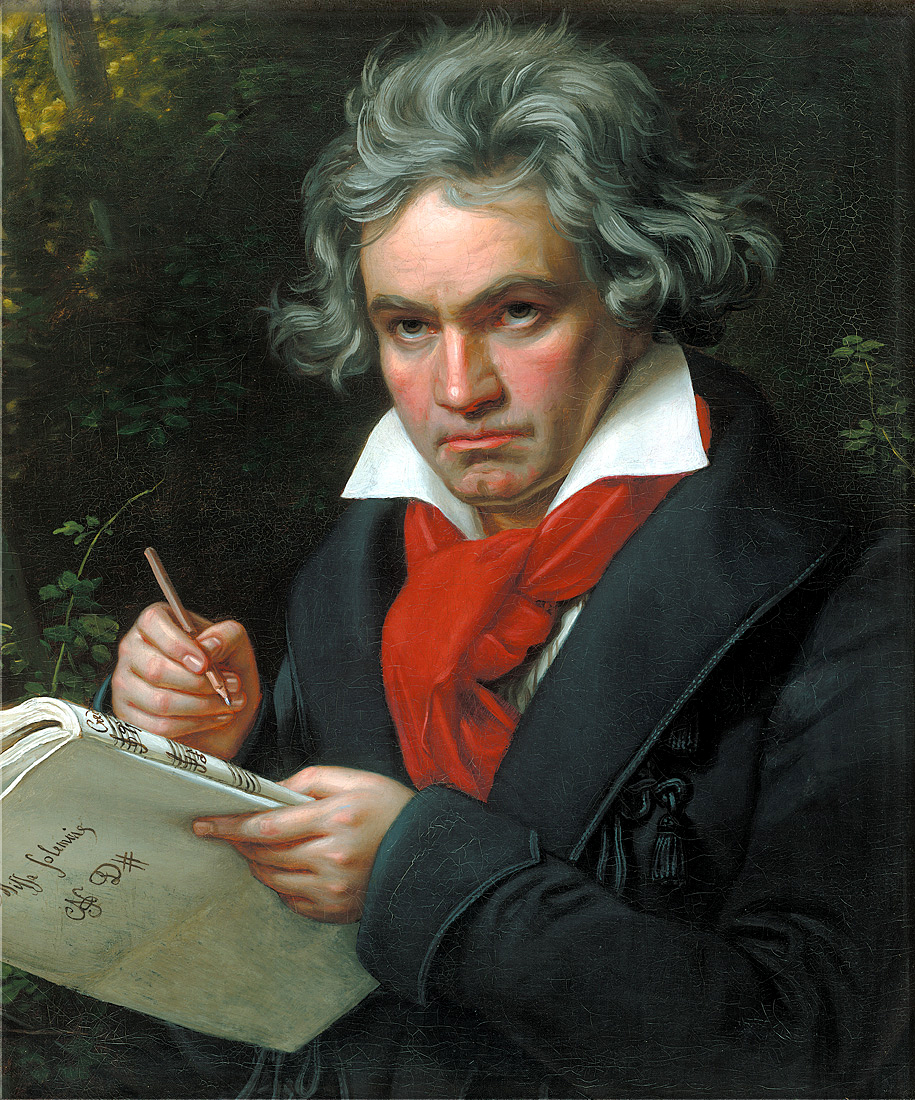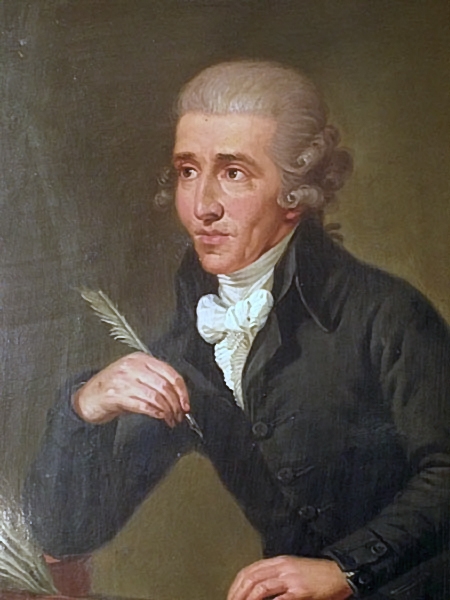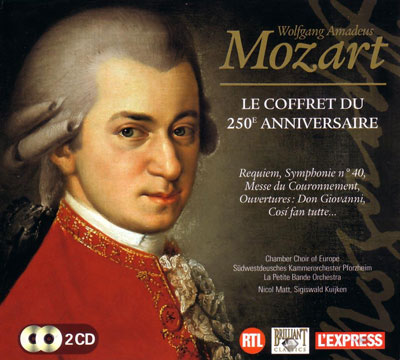 |
Craig White's Literature Courses Historical Backgrounds Music of the Enlightenment or "The Classical Period" of Classical Music app. 1730-1820 |
 Haydn & Mozart practicing a string quartet |
Discussion questions for "Classical" Classical Music:
1. How are not only the styles of music, the performance settings, and / or appearances of the performers more "Classical" (or Enlightenment / Age of Reason) than Romantic or Baroque?
2. In what ways does the music begin to sound Romantic but then return to the more restrained or orderly style of the Classical, Enlightenment, or Age of Reason period?
3. How do the musical forms or values of "Classical" classical music resemble or parallel those of Enlightenment art and architecture, or Enlightenment / Age of Reason literature (e.g. Franklin, Jefferson, the U.S. Constitution)?
![]()
As in architecture, art, and music, European music in the 18c sought to emulate the ideals and principles of Classical Antiquity, esp. Classical Greece:
![]() Order;
restraint
Order;
restraint
![]() Surface simplicity or clarity
Surface simplicity or clarity
![]() Symmetry; balance.
Symmetry; balance.
![]() Logical,
formal, or mathematical sequences / progressions rather than emotional or
sensational effects
Logical,
formal, or mathematical sequences / progressions rather than emotional or
sensational effects
Like all music, Classical music evokes emotional responses, but in keeping with the Age of Reason the Classical Style exercises structural restraint and balance, formal sequences, and lighter texture or content than the Baroque or Romantic eras (except when it grows more Romantic).
The music of this period may sometimes approach the more spiritual, emotional, or sentimental effects of the Baroque or Romantic periods, but such moments are not extended or amplified, and soon resubmerge or loop back into the more restrained overall structure.
The "Classical Period" takes place after the Baroque and before the Romantic periods of music, and so may be seen as an evolutionary progression that shares elements of both.
-
Instead of the church, nobility and aristocracy became the primary patrons of instrumental music. Music performed in aristocratic courts or homes instead of churches led to emphasis on a few primary instruments and more secular purposes for music.
-
Piano begins to replace harpsichord (or other stringed instruments) as dominant keyboard instrument. (Piano dominates in Romantic music.)
-
Melody becomes clearer or more marked against musical background, in contrast to Baroque and Renaissance music's layers of polyphony or competing voices and melodies. (This tendency increases in Romantic music.) Cadences or rhythms become more definite or regular.
-
Opera continues to develop.
-
New performance genres:
-
Development of the modern symphony form is usually attributed to Haydn.
-
The concerto featuring a single solo instrument backed by an orchestra becomes popular.
-
For smaller or more select audiences, chamber music forms continue to develop, including the sonata and and especially the string quartet.
-
|
|
|
 Carl Philipp Emanuel Bach (1714-88) |
 Beethoven (1770-1827) begins as a "Classical" composer but rapidly develops a Romantic style. |
Musical selections from the Classical period of classical music with discussion questions
Discussion questions for "Classical" Classical Music:
1. How are not only the styles of music, the performance settings, and / or appearances of the performers more "Classical" (or Enlightenment / Age of Reason) than Romantic or Baroque?
2. In what ways does the music begin to sound Romantic but then return to the more restrained or orderly style of the Classical, Enlightenment, or Age of Reason period?
3. How do the musical forms or values of "Classical" classical music resemble or parallel those of Enlightenment art and architecture, or Enlightenment / Age of Reason literature (e.g. Franklin, Jefferson, the U.S. Constitution)?
![]()
selection from Haydn, string quartet
1st movement of Mozart, Symphony 41 ("Jupiter")
music of the glass harmonica (blurb claims the instrument was invented by Benjamin Franklin, but Franklin only improved it)
History Channel on Franklin's Glass Armonica (first example of music is actually Romantic, from Tchaikovsky's The Nutcracker)
Mozart, Adagio for Glass Harmonica in C major
Gluck, Dance of the Blessed Spirits
Scarlatti, Concerti grossi
from Haydn, String Quartet opus 20, #5
Haydn, Symphony #22 "The Philosopher"
Haydn, Symphony 103 "Military"
Beethoven, Symphony #1 in C major, opus 21 (Beethoven is usually classified as a Romantic composer, but his first two symphonies sound more "Classical")

Wikipedia article on "Classical Period (Music)"

